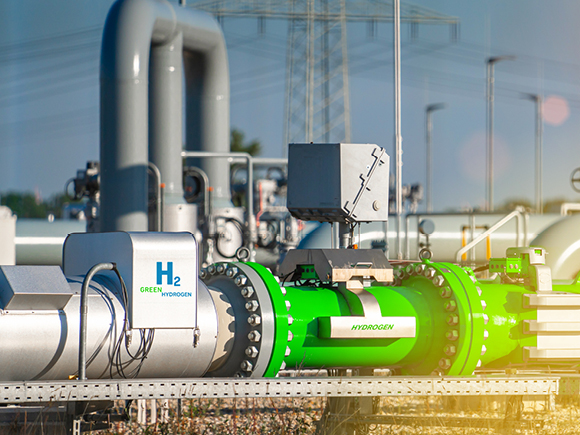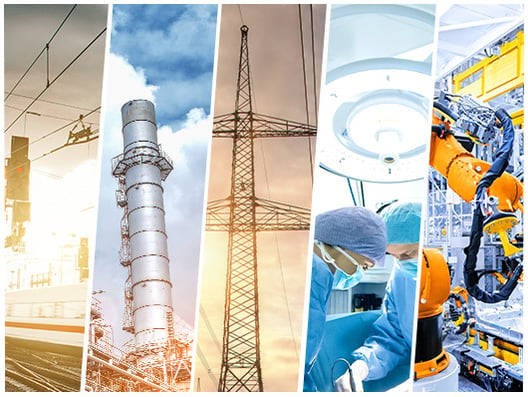Energy transition: How do hydrogen applications become electrically safe?
Hydrogen could become the coal of the future and is more topical than ever in times of the energy transition. Many developments point to green hydrogen as a possible energy carrier of tomorrow. However, the large-scale use of hydrogen initially still poses some challenges in terms of electrical safety.
Read this article to find out how far research and industry have come in the production and use of green hydrogen, and what support Bender can offer in the area of electrical safety.
Hydrogen as an energy carrier and storage medium
Hydrogen (H2) is produced when water is broken down into its chemical components hydrogen and oxygen by electrolysis. This process requires a lot of energy. Hydrogen can be stored and transported relatively well and is therefore extremely attractive as an energy carrier. If the energy stored in the hydrogen is needed again, it is recombined with oxygen in a fuel cell. The stored energy is released without emissions and used, for example, for power plants, for heating or for powering vehicles (read here why hydrogen is the element of the future).
Electrical safety is a decisive factor for success
What is simple in theory still has some catches in practice. In order to drive forward the energy transition, government institutions, research and industry worldwide are working at full speed on the technological basis for the use of hydrogen. But no matter what the technical solutions will look like, electrical safety will always play a decisive role when it comes to enforcing them. Bender is already involved in various areas and hydrogen projects here. On the one hand, in the development and realisation of technologies and plants, but also already in standards committees. There, Bender helps to define the requirements for electrical safety in connection with hydrogen and to set binding safety standards.
How does hydrogen become sustainable?
In addition to the question of electrical safety, the issue of sustainable production of hydrogen is also a major challenge. Because only if we succeed in producing enough hydrogen sustainably, i.e. from renewable energy, will the energy transition work. There are a number of ways to produce the electricity required for this, in which Bender is also active as a partner for electrical safety in many places. Examples are:
- Large-scale photovoltaic systems
- Industrial wind power plants
- Hydroelectric power stations
There is no way around green hydrogen
It will be some time before processes for the production and use of "green" hydrogen are established and installed on a large scale. Nevertheless, Bender's experts advocate pursuing the path there, even if this requires compromises in the meantime (read more on the topic here).
5 ways in which Bender supports the energy transition
- Develop and define basic principles in standards committees
- Ensure plant efficiency
- Protect persons handling electrical equipment
- Intelligent monitoring solutions
- Provide predictive maintenance applications
Would you like to talk to us about hydrogen?
In the development of hydrogen utilisation solutions, Bender is involved at every stage of the process - from the development of the system architecture to plant production. We support you in making your hydrogen solutions electrically safe.
You want to know more? Get in touch with our experts.





